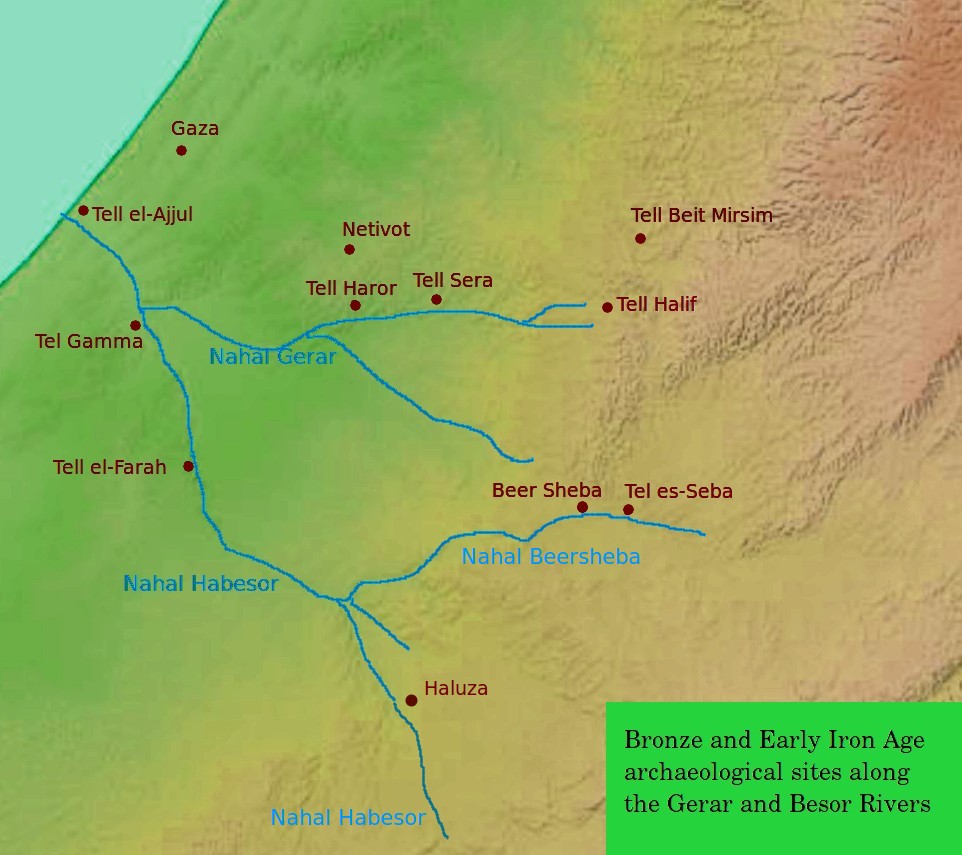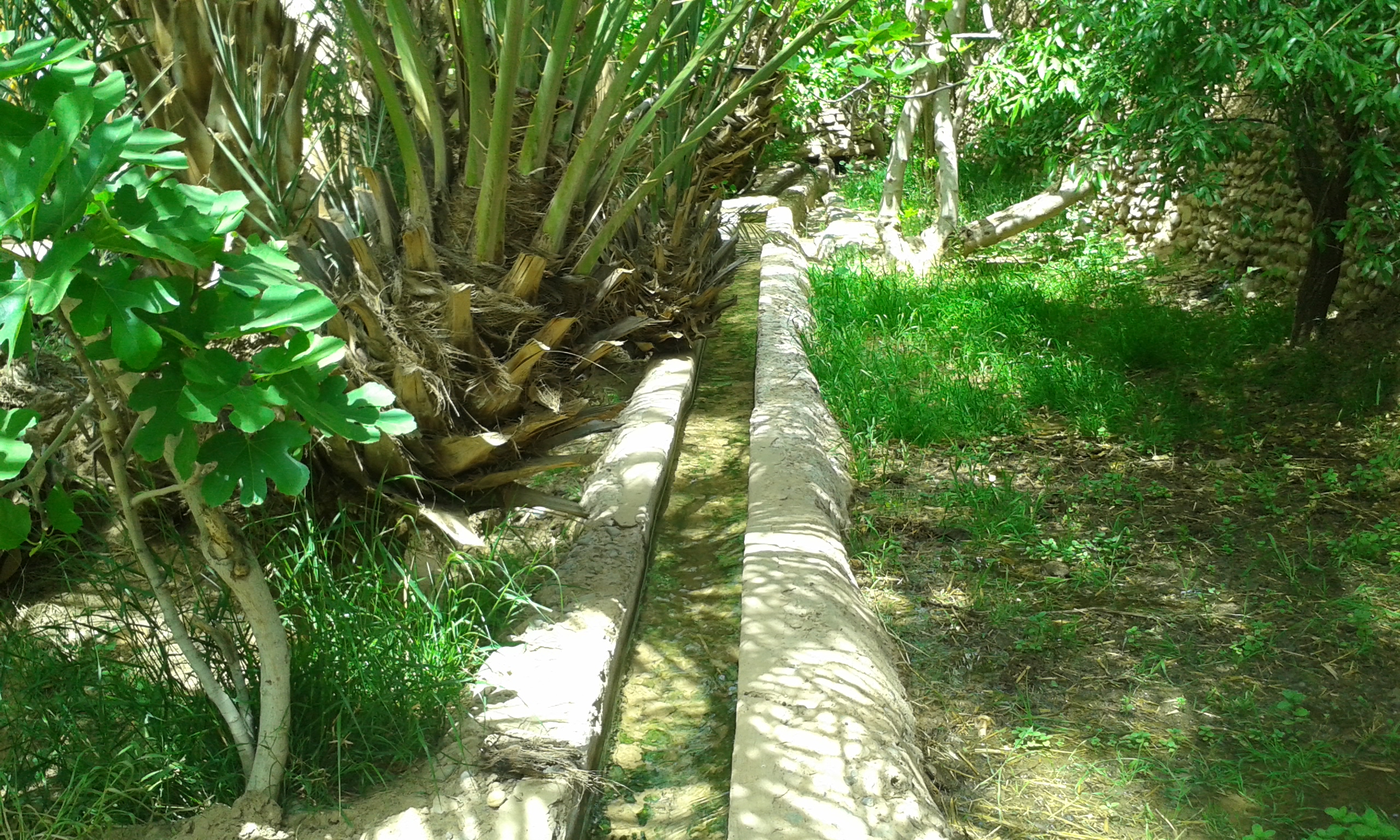|
Kadesh (Israel)
Kadesh or Qadesh or Cades (, from the root "holy") is a place-name that occurs several times in the Hebrew Bible, describing a site or sites located south of, or at the southern border of, Canaan and the Kingdom of Judah in the kingdom of Israel. Many modern academics hold that it was a single site, located at the modern Tel el-Qudeirat, while some academics and rabbinical authorities hold that there were two locations named Kadesh. A related term, either synonymous with Kadesh or referring to one of the two sites, is Kadesh (or Qadesh) Barnea. Various etymologies for ''Barnea'' have been proposed, including 'desert of wanderings,' but none have produced widespread agreement. The Bible mentions Kadesh and/or Kadesh Barnea in a number of episodes, making it an important site (or sites) in narratives concerning Israelite origins. Kadesh was the chief site of encampment for the Israelites during their wandering in the Zin Desert (Deuteronomy 1:46), as well as the place from which t ... [...More Info...] [...Related Items...] OR: [Wikipedia] [Google] [Baidu] |
Q-D-Š
''Q-D-Š'' is a triconsonantal Semitic root meaning " sacred, holy", derived from a concept central to ancient Semitic religion. From a basic verbal meaning "to consecrate, to purify", it could be used as an adjective meaning "holy", or as a substantive referring to a "sanctuary, sacred object, sacred personnel." The root is reflected as ''q-d-š'' ( Phoenician , Hebrew ) in Northwest Semitic and as ''q-d-s'' () in Central and South Semitic. In Akkadian texts, the verb conjugated from this root meant to "clean, purify." Canaanite religion It was used this way in Ugaritic, as for example, in the words ''qidšu'' (meaning "holy place" or "chapel") and ''qad(i)šu'' (meaning "consecrated gift" or "cultic personnel"). In some Ugaritic texts, ''qdš'' is used as a divine epithet. For example, the gods are referred to as "the sons of holiness" or "the holy ones" (''bn qdš''), and in the Ugaritic '' Legend of Keret'', the hero is described as "the son of El and the offsprin ... [...More Info...] [...Related Items...] OR: [Wikipedia] [Google] [Baidu] |
The Twelve Spies
The Twelve Spies, as recorded in the Book of Numbers, were a group of Israelites, Israelite chieftains, one from each of the Twelve Tribes of Israel, Twelve Tribes, who were dispatched by Moses to scout out the Land of Canaan for 40 days as a future home for the Israelite people, during the time when the Israelites were in the wilderness following their The Exodus, Exodus from Ancient Egypt. The account is found in , and is repeated with some differences in . God had promised Abraham that there would be a Promised Land for the nations to come out of his son, Isaac. The land of Canaan that the spies were to explore was the same Promised Land. Moses asked for an assessment of the geographic features of the land, the strength and numbers of the population, the agricultural potential and actual performance of the land, civic organization (whether their cities were like camps or strongholds), and forestry conditions. He also asked them to be positive in their outlook and to return with ... [...More Info...] [...Related Items...] OR: [Wikipedia] [Google] [Baidu] |
Brook Of Egypt
The Brook of Egypt () is a wadi identified in the Hebrew Bible as forming the southernmost border of the Land of Israel. A number of scholars in the past identified it with Wadi al-Arish, an ephemeral river flowing into the Mediterranean sea near the Egyptian city of Arish, while other scholars, including Israeli archaeologist Nadav Na'aman and the Italian Mario Liverani believe that the Besor stream, just to the south of Gaza, is the landform referenced in the Bible. A related phrase is ('river of Egypt'), used in Genesis . Nahal Besor The Israeli archaeologist Nadav Na'aman and the Italian Mario Liverani have suggested that Wadi Gaza or Nahal Besor, was the Brook of Egypt.Nadav Na'amanThe Brook of Egypt and Assyrian Policy on the Egyptian Border.Tel Aviv 6 (1979), pp. 68–90Mario Liverani (1995). Neo-Assyrian geography, p. 111. Università di Roma, Dipartimento di scienze storiche, archeologiche e antropologiche dell'Antichità. Certainly, it was controlled by Egypt i ... [...More Info...] [...Related Items...] OR: [Wikipedia] [Google] [Baidu] |
Aravah
The Arabah/Araba () or Aravah/Arava () is a loosely defined geographic area in the Negev Desert, south of the Dead Sea drainage basin, basin, which forms part of the border between Israel to the west and Jordan to the east. The old meaning, which was in use up to around the early 20th century, covered almost the entire length of what today is called the Jordan Rift Valley, running in a north–south orientation between the southern end of the Sea of Galilee and the northern tip of the Gulf of Aqaba of the Red Sea at Aqaba–Eilat. This included the Jordan Valley (Middle East), Jordan River Valley between the Sea of Galilee and the Dead Sea, the Dead Sea itself, and what today is commonly called the Arava Valley. The contemporary use of the term is restricted to this southern section alone. Geography The Arabah is in length, from the Gulf of Aqaba to the southern shore of the Dead Sea. Topographically, the region is divided into three sections. From the Gulf of Aqaba northwa ... [...More Info...] [...Related Items...] OR: [Wikipedia] [Google] [Baidu] |
Oasis
In ecology, an oasis (; : oases ) is a fertile area of a desert or semi-desert environmentBattesti, Vincent (2005) Jardins au désert: Évolution des pratiques et savoirs oasiens: Jérid tunisien. Paris: IRD éditions. . that sustains plant life and provides habitat for animals. Surface water may be present, or water may only be accessible from wells or underground channels created by humans. In geography, an oasis may be a current or past rest stop on a transportation route, or less-than-verdant location that nonetheless provides access to underground water through deep wells created and maintained by humans. Although they depend on a natural condition, such as the presence of water that may be stored in reservoirs and us ... [...More Info...] [...Related Items...] OR: [Wikipedia] [Google] [Baidu] |
Journal Of The Ancient Near Eastern Society
The ''Journal of the Ancient Near Eastern Society'' (JANES) is a biannual peer-reviewed academic journal. It was established in 1968 as ''The Journal of the Ancient Near Eastern Society of Columbia University'', and since 1980 it has been housed at the Jewish Theological Seminary of America The Jewish Theological Seminary (JTS) is a Conservative Jewish education organization in New York City, New York. It is one of the academic and spiritual centers of Conservative Judaism as well as a hub for academic scholarship in Jewish studies .... The journal is abstracted and indexed in ATLA Religion Database. References External links * {{Official website, https://janes.scholasticahq.com/ Religious studies journals Academic journals established in 1968 Biannual journals Academic journals associated with universities and colleges Academic journals associated with learned and professional societies Jewish Theological Seminary of America Columbia University academic journals ... [...More Info...] [...Related Items...] OR: [Wikipedia] [Google] [Baidu] |
Land Of Israel
The Land of Israel () is the traditional Jewish name for an area of the Southern Levant. Related biblical, religious and historical English terms include the Land of Canaan, the Promised Land, the Holy Land, and Palestine. The definitions of the limits of this territory vary between passages in the Hebrew Bible, with specific mentions in , , and . Nine times elsewhere in the Bible, the settled land is referred as " from Dan to Beersheba", and three times it is referred as "from the entrance of Hamath unto the brook of Egypt" (, and ). These biblical limits for the land differ from the borders of established historical Israelite and later Jewish kingdoms, including the United Kingdom of Israel, the two kingdoms of Israel (Samaria) and Judah, the Hasmonean kingdom, and the Herodian kingdom. At their heights, these realms ruled lands with similar but not identical boundaries. Jewish religious belief defines the land as where Jewish religious law prevailed and ex ... [...More Info...] [...Related Items...] OR: [Wikipedia] [Google] [Baidu] |
King's Highway (ancient)
The King's Highway was a trade route of vital importance in the ancient Near East, connecting Africa with Mesopotamia. It ran from Egypt across the Sinai Peninsula to Aqaba, then turned northward across Transjordan, to Damascus and the Euphrates River. After the Muslim conquest of the Fertile Crescent in the 7th century AD and until the 16th century, it was the ''darb al-hajj'' or pilgrimage road for Muslims from Syria, Iraq, and beyond heading to the holy city of Mecca.Lonely Planet, ''Jordan'' In modern Jordan, Highway 35 and Highway 15 follow this route, connecting Irbid in the north with Aqaba in the south. The southern part crosses several deep wadis, making it a highly scenic if curvy and rather low-speed road. Route The Highway began in Heliopolis, Egypt and then went eastward to Clysma (modern Suez), through the Mitla Pass and the Egyptian forts of Nekhl and Themed in the Sinai desert to Eilat and Aqaba. From there the Highway turned northward through the Ara ... [...More Info...] [...Related Items...] OR: [Wikipedia] [Google] [Baidu] |
Edom
Edom (; Edomite language, Edomite: ; , lit.: "red"; Akkadian language, Akkadian: , ; Egyptian language, Ancient Egyptian: ) was an ancient kingdom that stretched across areas in the south of present-day Jordan and Israel. Edom and the Edomites appear in several written sources relating to the late Bronze Age and to the Iron Age in the History of the ancient Levant, Levant, including the list of the New Kingdom of Egypt, Egyptian pharaoh Seti I from c. 1215 BC as well as in the chronicle of a campaign by Ramesses III (r. 1186–1155 BC), and the Tanakh. Archaeological investigation has shown that the nation flourished between the 13th and the 8th centuries BC and was destroyed after a period of decline in the 6th century BC by the Neo-Babylonian Empire, Babylonians. After the fall of the kingdom of Edom, the Edomites were pushed westward towards southern Kingdom of Judah, Judah by nomadic tribes coming from the east; among them were the Nabataeans, who first appeared in the h ... [...More Info...] [...Related Items...] OR: [Wikipedia] [Google] [Baidu] |
Aaron
According to the Old Testament of the Bible, Aaron ( or ) was an Israelite prophet, a high priest, and the elder brother of Moses. Information about Aaron comes exclusively from religious texts, such as the Hebrew Bible, the New Testament ( Luke, Acts, and Hebrews), and the Quran. The Hebrew Bible relates that, unlike Moses, who grew up in the Egyptian royal court, Aaron and his elder sister Miriam remained with their kinsmen in the northeastern region of the Nile Delta. When Moses first confronted the Egyptian king about the enslavement of the Israelites, Aaron served as his brother's spokesman to the Pharaoh. Part of the Law given to Moses at Sinai granted Aaron the priesthood for himself and his male descendants, and he became the first High Priest of the Israelites. Levitical priests or '' kohanim'' are traditionally believed and halakhically required to be of direct patrilineal descent from Aaron. According to the Book of Numbers, Aaron died at 123 years of ... [...More Info...] [...Related Items...] OR: [Wikipedia] [Google] [Baidu] |






